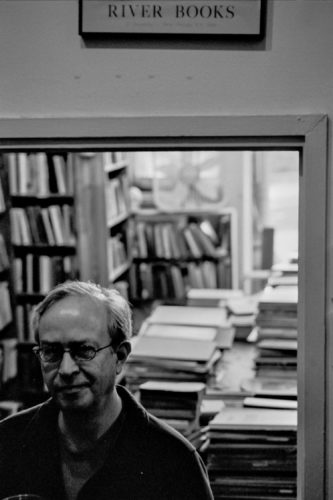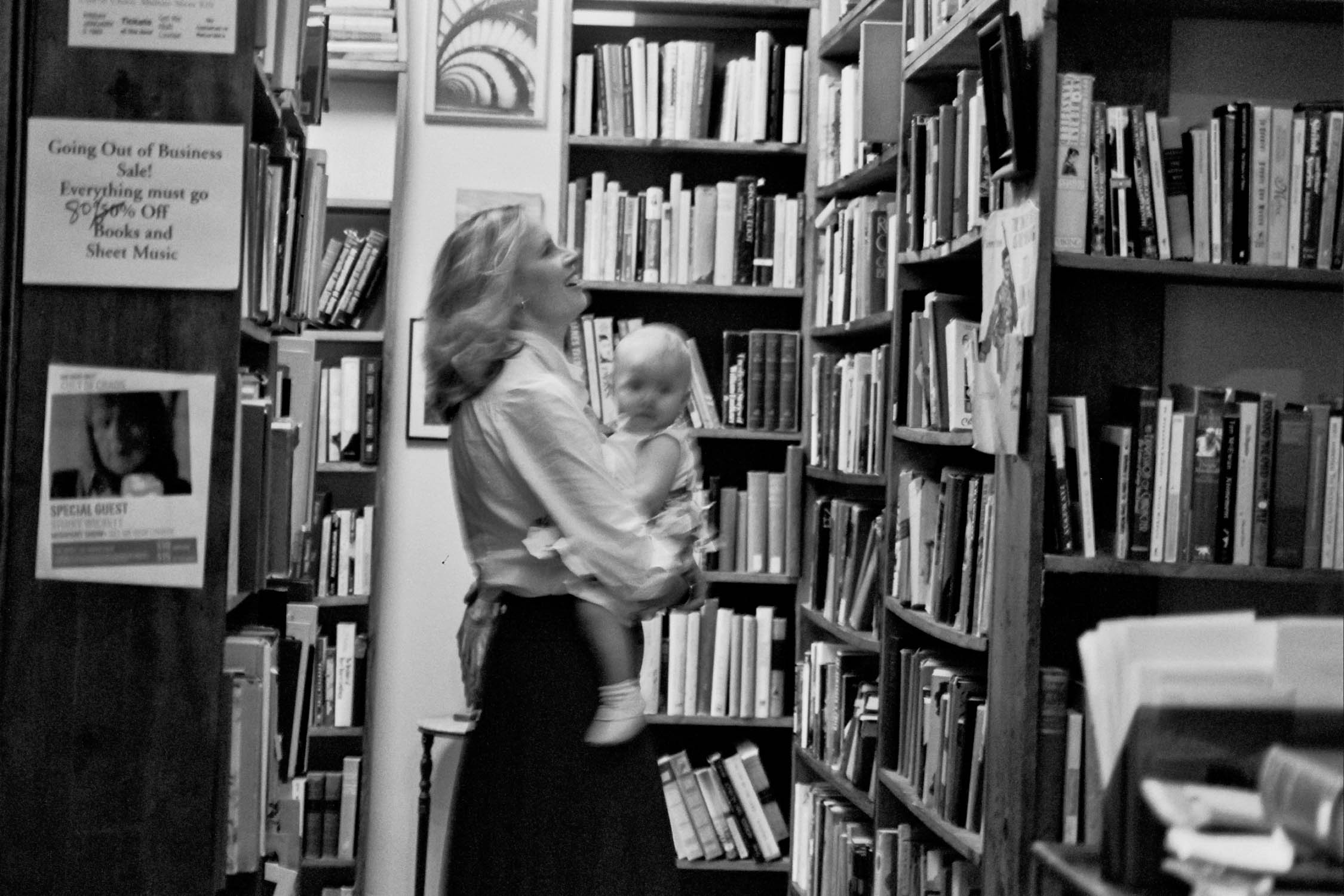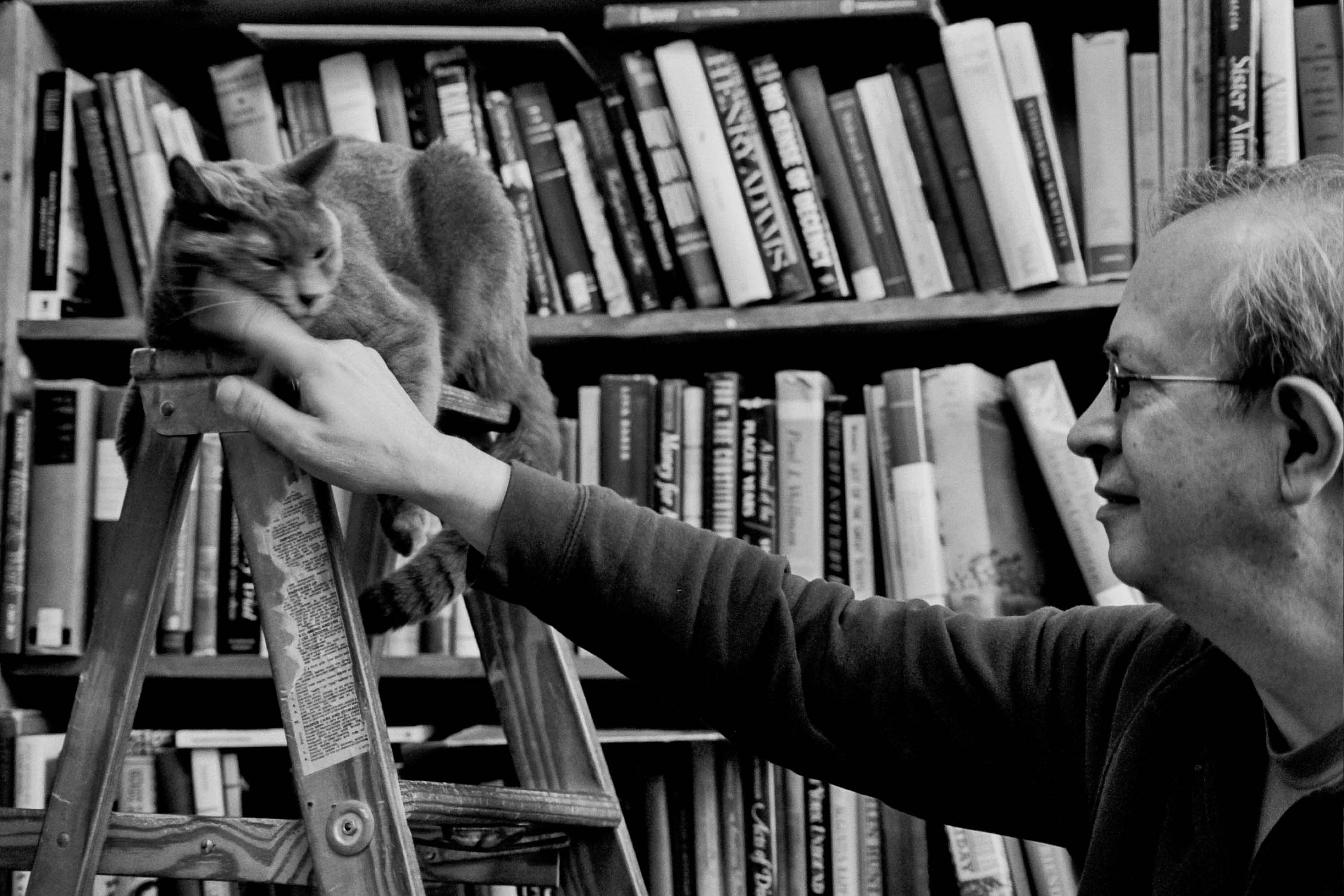With its collection of musicians, murals, theaters, artists’ studios, violin-makers, corsetieres; with its open-air courtyard that appears sudden as a breeze from the hollow of the fourth floor; with its streams of children hurrying to and from lessons—with all this strung together via a vintage elevator with operator, the Fine Arts Building on Michigan Avenue is one of the best places in the city to peer into windows in order to catch glimpses of the curious lives within. It’s the kind of place that seems, at times, to contain every imaginable thing or person you could ever wish to meet. But its most tempting window—the eye of the Fine Arts Building—belongs to the second-floor storefront, which was, until recently, home to the Selected Works Used Books and Sheet Music bookstore.
Colloquially referred to as “Chicago’s Best Bookstore With Cat,” Selected Works is the creation of Hyde Park resident Keith Peterson and has been a Chicago institution for the past thirty-three years. And although it was located on the North Side before moving to its home in the Fine Arts Building downtown, Selected Works was a satellite South Side haunt through and through.
It all starts with the pearl-grey cat. Hodge, named after Samuel Johnson’s much-beloved cat, is the bookstore’s permanent resident—and somewhat famous, as the star of a series of books written by Hyde Park writer Suzanne Erfurth and illustrated by Beatriz E. Ledesma. (The first two books can be found at 57th Street Books and the Sprocket & Stone pet shop, with a third upcoming.) The cat occupies a delicate symbiosis with the towering, slightly off-kilter bookshelves. Ever-present, Hodge lurks atop the labyrinth of shelves, sprawls over the owner’s desk, naps on the rungs of a stepladder—and darts out the door if you aren’t looking as you enter.


The bookstore has the intimate DIY vibe of an apartment museum, like if it weren’t a bookstore it might’ve been a kitchen, a clubhouse, a salon-style café—or just the exquisitely cozy home of someone you were very fortunate to meet. Being there has the feel of perusing through someone’s personal collection or life’s library, brimming with stuff: art, posters, photographs, inside jokes, memorabilia, and ephemera of all kinds. A massive North Broadway street sign hangs overhead. An enormous iron candelabra rests against a window. A gargoyle shrugs under the weight of The Practical Gardener. Behind the desk is a snapshot of Keith’s wife, Gail Isenberg, flanked by two dear friends, now deceased. He keeps it as a reminder, both “of a joyous moment, and how fleeting everything is.” In the photograph, it is his wedding day.

A stomping ground for countless Hyde Park patrons, the bookstore closed its doors in June due to a decline in print book sales. “It’s no secret that the culture is drifting in the direction of digital media, entertainment, online merchandising,” explained Keith.
“Having shaken things up like this, my future life is not clear to me—which is an exciting thing, the sort of anxious excitement I’ve felt only a few times in my life—going off to college for the first time, starting my first store back in 1984, getting married,” he told me. “I didn’t really know how any of those big decisions were going to play out. So—I’m actually sort of tingling with excitement as well as anxiety.”
Despite being a frequent visitor, I cannot tell you how many rooms the bookstore contained. Nor can I hazard any guess as to how the original floorplan might’ve looked (so liberal was Keith’s creative license when putting the place together that his patrons were directed through various book-lined and cozy hideaways). But I can tell you with confidence that, from the single chair in the tiny southernmost room, in the worst of winter, you could sit cozily drying your boots on the radiator, gazing out onto the churning grey lake. I can tell you that it was the place I found my favorite play (Dylan Thomas’s Under Milk Wood), in a slender New Directions printing, tucked between a Chaucer and I forget what, priced at three dollars. I can tell you that Selected Works was an easy place to strike up a conversation. And that it was even easier to echolocate to, exhibiting the same psychological magnetism usually reserved for one’s grammar schools and former apartments, and that you were prone to turn up there when getting off the northbound 6 bus, after a play at DePaul, or just bicycling through downtown on the way to someplace else. And I can tell you that you were always greeted by just the right sort of party—whether on Second Fridays at the Fine Arts Building, when Keith would put out wine and potato chips, or right after closing up on a weekday, when you were all off to an old Italian dive nearby. These are the same kinds of gatherings you still can find in Hyde Park at Jimmy’s or the Cove, or in various Victorian homes and shotgun apartments scattered throughout the South Side, but the bookstore will be dearly missed. It is a reminder that you can live elsewhere for a long time, but you are still always leaving something behind. Selected Works felt like home, because it was.


The Selected Works space will be taken over by Mary Gibbons and Aaron Lippelt, cofounders of Pilsen Community Books. They will be opening a new bookstore called The Dial (a nod to the famous literary magazine published in the Fine Arts Building from 1896 to 1916), due to open in early October. Keith has encouraged them to acquire a cat of their own, as, in his words, “A day will not go by without someone coming in looking for Hodge. Another cat might ease the distress of not finding him.”
Did you like this article? Support local journalism by donating to South Side Weekly today.


This is the best article written about the much beloved Chicago bookstore, Selected Works. The black and white photos are really spectacular, and capture the quirky charm of this sadly shuttered bookstore. Keith and Hodge will be woefully lamented in the Chicago bookstore market, as was the demise of Hyde Park’s O’Gara and Wilson’s Books. Time marches on , and that is not necessarily real progress for readers.
In my older years it seems that every day at least one valuable thing goes missing.